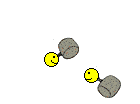It may be very arcane to most of us, but graphics startup Otoy has come up with a breakthrough that should help game developers create much more beautiful games that can run across different hardware platforms.
In a nutshell, Otoy reverse-engineered Nvidia’s general purpose graphics processing unit (GPGPU) software, known as CUDA, to run on non-Nvidia hardware. That means that programs written in the CUDA language are no longer exclusive to Nvidia graphics chips. Now they can run on GPUs from Advanced Micro Devices, ARM, and Intel. That means a CUDA program written for the PC could run on a PlayStation 4 or an Apple iPad.
Otoy has ported the CUDA language to run on AMD, Intel, and ARM GPUs for the first time ever. That means any application written in CUDA can run, without modification, on all major chipsets and platforms. While there is an independent GPGPU standard dubbed OpenCL, it isn’t necessarily as good as CUDA, Otoy believes.
Jules Urbach, chief executive of Los Angeles-based Otoy, said in an exclusive interview with GamesBeat that Nvidia’s CUDA language is superior and enables much richer graphics software. Hence, OpenCL hasn’t provided a true market alternative to CUDA. That’s why building the CUDA “cross compiler” was an important task. And Urbach said the Otoy research and development team was able to do it in 9 weeks.
“This is a big breakthrough from our point of view,” Urbach said.
Urbach said the move will save a huge amount of time for game and app developers, since they can now create a single CUDA code base that can run across a wide variety of PCs, Macs, iOS devices, Android, and other hardware platforms. For each team, that means saving months of engineering time, Urbach said. As an example, CUDA has something called “compute shaders” that allow for much more advanced graphics effects, Urbach said.
Read More: Venturebeat
In a nutshell, Otoy reverse-engineered Nvidia’s general purpose graphics processing unit (GPGPU) software, known as CUDA, to run on non-Nvidia hardware. That means that programs written in the CUDA language are no longer exclusive to Nvidia graphics chips. Now they can run on GPUs from Advanced Micro Devices, ARM, and Intel. That means a CUDA program written for the PC could run on a PlayStation 4 or an Apple iPad.
Otoy has ported the CUDA language to run on AMD, Intel, and ARM GPUs for the first time ever. That means any application written in CUDA can run, without modification, on all major chipsets and platforms. While there is an independent GPGPU standard dubbed OpenCL, it isn’t necessarily as good as CUDA, Otoy believes.
Jules Urbach, chief executive of Los Angeles-based Otoy, said in an exclusive interview with GamesBeat that Nvidia’s CUDA language is superior and enables much richer graphics software. Hence, OpenCL hasn’t provided a true market alternative to CUDA. That’s why building the CUDA “cross compiler” was an important task. And Urbach said the Otoy research and development team was able to do it in 9 weeks.
“This is a big breakthrough from our point of view,” Urbach said.
Urbach said the move will save a huge amount of time for game and app developers, since they can now create a single CUDA code base that can run across a wide variety of PCs, Macs, iOS devices, Android, and other hardware platforms. For each team, that means saving months of engineering time, Urbach said. As an example, CUDA has something called “compute shaders” that allow for much more advanced graphics effects, Urbach said.
Read More: Venturebeat















